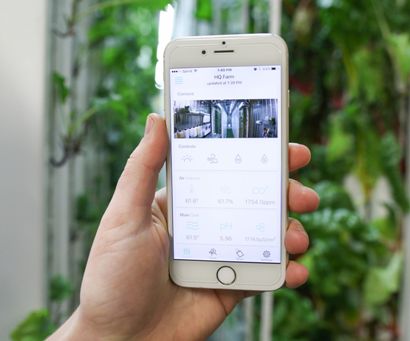It wasn’t too long ago when freight container farming captured the world’s attention. It was more of an upcycling concept, and if memory serves correctly, first came to life in Scandinavia in 2012.
The following year, Kate Hoffman brought the style to London with aquaponics in the box and a greenhouse on the roof. Her popup farm, GrowUp Box, was a huge success, and today, it’s a full-fledged commercial aquaponic farm. Several other container farm outfitters also now thrive in North America and Europe. A lot can happen in six years!
There are so many advantages to container farming, that even Kimbal Musk launched his own urban farming incubator program using freight containers.
What are the advantages?
For starters, they make growing in severe climates possible. For example, producing fresh, locally grown lettuce north of the Arctic Circle. Whether built by the grower or purchased from an outfitter, these indoor farms allow anyone, anywhere, to grow food year around. You don’t even need land because they are easily moved. And of course, upcycling is so popular these days.

Here’s what the people at Indoor Ag-Con report as the top five advantages to container farming:
The Price is Right
Getting into farming usually means needing a lot of investment cash. Urban or rural, it matters not, you need a lot of money to do much of anything. But you can get into container farming for as little as $15,000 when building your own. Or, you can purchase a fully outfitted container farm for $50,000-$120,000. Even the priciest models cost less than most houses. Of course, outfitting costs will start dropping as technology advances. The LED lighting alone will probably decrease by 40 percent in the next couple of years.
You Don’t Need Land
Container farming is almost mobile; easily moved with a freight truck. This gives container farmers lots of flexibility. Of course, one still has to comply with zoning ordinances and obtain the proper permits to drop their box and get down to growing food. Other than that, with access to level pavement, electricity, and water – you’re good to go.
Less Waste
Getting an indoor farm up and running in a building is a long, arduous process. One that can cost over a year of your time, and a serious cash setback. But with container farming, you’ll be harvesting and off to market in no time once you have your site and permits in order. With a fast-growing crop, like greens or strawberries, you can start making some money in a matter of weeks.

You Can Get Funding
Don’t have the cash lying around to get your container farming operation up and running? Good news! This particular kind of indoor farm has captured everyone’s attention. Indoor Ag-Con reports that you’ll find it a lot easier to get the funds you need via crowdfunding and investor capital than if you wanted to start your farm in a building or on acreage.
New Farmer Magnets
According to data gathered by Indoor Ag-Con, 80 percent of people coming into container farming have no agricultural background. It brings an interesting mix of skills and experience to indoor agriculture not found in traditional farming. It allows professionals from various industries to slowly transition from their day jobs to full-time farming.
Another interesting thing about container farming just occurred to me: It’s ageless! While the traditional farmer’s median age is over 60, the container farmers range in age. They run the gamut from young college students to retired couples. They also come from all ethnic cultures, and unlike traditional farming, it’s not largely male-dominated.
So, there you have it! You’ll find container farmers operating anywhere from small towns to big cities, on farms, school grounds, and more places in between. In addition to being incredibly mobile, they grow high-quality food, medicine, and recreational herbs using the latest in what technology has to offer.
Source: Indoor Ag-Con
Images courtesy of Freight Farms, a leading US supplier of plug-and-play container farms.